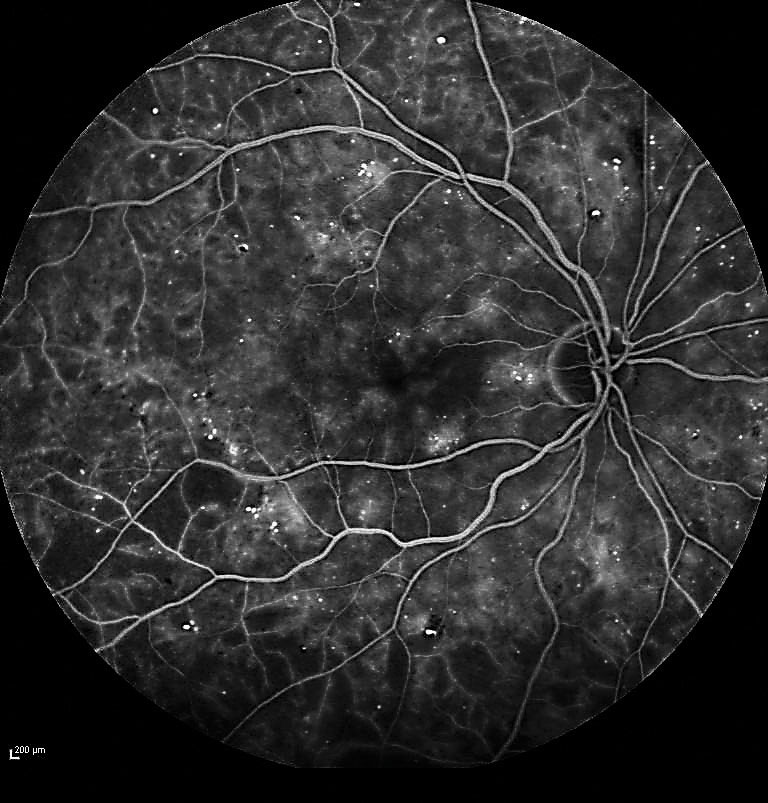 |
| HbA1c levels in patients with diabetes may help predict risk of DR development or progression. Photo: Jay M. Haynie, OD. Click image to enlarge. |
A new study that looked at the risk factors for non-proliferative diabetic retinopathy (NPDR) found that an increase in age and a decrease in HbA1c levels protected patients against developing DR. The findings were based on a model that included a patient’s age at the initial visit, annual HbA1c and ethnicity, which were used to predict the rate of progression through each ETDRS stage.
The findings may influence clinical care by better predicting the required intervals in evaluating change and, in turn, the frequency of office visits, the authors suggested.
The investigation included 230 diabetic patients who received an initial eye exam between 2010 and 2017 at the Lyndon B. Johnson General Hospital Ophthalmology Clinic in Houston, TX. Patients with proliferative DR, fewer than two years of follow-up or less than three clinic visits were excluded.
Initially, 65 eyes (about 28%) had no retinopathy, 73 (32%) had mild NPDR, 60 (26%) had moderate NPDR and 32 (14%) had severe NPDR. Patients were followed for about six years.
About 71% of eyes in the study progressed during follow-up. Independent risk factors affecting progression rates included duration of diabetes and Hispanic ethnicity. Roughly 69% of the participants were Hispanic.
Although ethnicity and diabetes duration weren’t major risk factors when considered individually, they did significantly affect the overall predictive model, the researchers explained. For example, Hispanic patients fared worse and were 31% more likely to progress compared with non-Hispanic participants.
Considering non-Hispanic patients and when progression occurred, age, duration of diabetes and annual HbA1c were estimated to be about three years for no retinopathy, five years for mild NPDR, six years for moderate NPDR and five years for severe NPDR.
Additionally, each 1% annual increase in HbA1c diminished sojourn times by 15%, 10%, 7% and 10% for no retinopathy, mild NPDR, moderate NPDR and severe NPDR, respectively.
When a patient’s age was increased by one year at the time of the initial ophthalmology visit, the risk of progression was reduced by 1%. Additionally, patients with no retinopathy were generally older compared with individuals with severe retinopathy. One explanation for this trend is that disease duration is shorter in those patients diagnosed with late-onset DR, and the longer a patient has diabetes, the higher the risk for advanced glycation, which can play a role in the development of DR, the investigators noted.
HbA1c level is a significant modifiable risk factor in controlling the progression of DR, and the proposed model could be used to predict the time and rate of progression based on an individual’s risk factors, they added.
Additionally, a prospective multicenter study should be conducted to further validate the model, they said.
Chen DJ, Kuo JC, Wright AJ, et al. Determining risk factors that affect progression in patients with nonproliferative diabetic retinopathy. J Ophthalmol. 2021;2021:6064525. |

